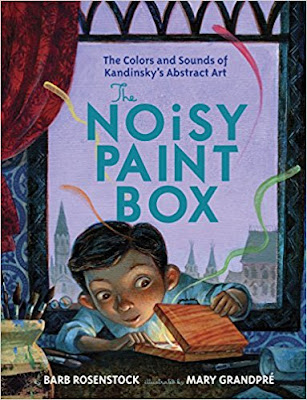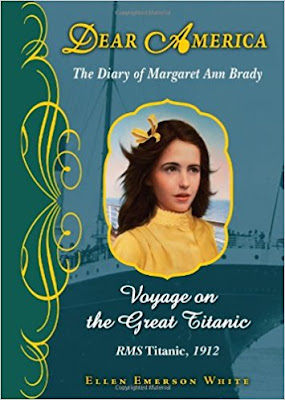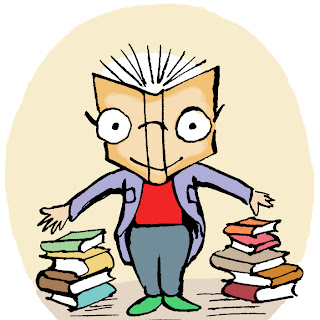PICTURE BOOK FOCUS Creative Non-Fiction
 |
What is creative non-fiction? To get you started, Natascha Biebow suggests some ideas
for different types of books within the genre.
This is possibly one of the most popular genres!
AMELIA AND ELEANOR GO FOR A RIDE, by Pam Munoz Ryan and Brian Selznick
This kind of book also has a story arc to hook in young readers, but the author makes some stuff up — the author bases the narrative on real people, a true event or time period, but imagines characters, dialogue and scenes. The story is fictionalised.
THE NOISY PAINT BOX, by Barb Rosenstock and Mary GrandPré
This story about the Russian abstract artist Wassily Kandinsky is based on true events, but the author imagined the dialogue.
So you’ve probably heard the buzz about creative non-fiction, especially in the US market, and you’d like to have a go. Where to start?
The basic difference between creative non-fiction and regular non-fiction – the kind you or your grandparents grew up with – is that, though regular non-fiction may present the facts in an interesting way, it doesn’t necessarily tell a story.
Creative non-fiction can use many different narrative techniques – poetry, prose, memoir, biography – to tell a story about real people and events – in a compelling, vivid and exciting manner.
Rules
- You may not embellish
- You may not make stuff up! (Remember the truth is often stranger than fiction!)
- You may not exaggerate
- Everything MUST be true
If you include dialogue, this must be an actual quote, from sources like a memoir, a newspaper article, a transcript or a statement in a press release. You must be able to substantiate where you found this quote. (See an example further down the article in The Inventor's Secret, a biography of Thomas Edison.)
One of the most popular kinds of creative non-fiction for children is narrative non-fiction. It is crafted with scenes, a beginning, middle and end, dramatic story arc, with all the page-turning qualities of a story. You can cover almost anything using this technique, as long as you don’t make anything up. The trick is to find a new or interesting take as your starting point. Here are some examples to inspire you:
SCIENCE
TINY: The Invisible World of Microbes, by Nicola Davies and Emily Sutton
 |
| © Walker Books |
The author tells the story of how microbes – the smallest things on the planet – do some of the biggest jobs. The science is explained in a simple narrative arc, where the words and pictures are tightly integrated to make relatively complicated ideas accessible to young readers.
 |
| From Tiny by Nicola Davies & Emily Sutton, © Walker Books |
FEATHERS: Not Just for Flying, by Melissa Stewart and Sarah S. Brannen
 |
| © Charlesbridge |
The author explores the uses of different kinds of feathers and likens them to everyday objects to make the facts accessible and interesting to young readers. For example:
Feathers can shade out sun like an umbrella … or protect skin like sunscreen.
ART
THE IRIDESCENCE OF BIRDS: A Book About Henri Matisse, by Patricia MacLachlan and Hadley Hooper
 |
| © Roaring Brook Press |
The author started with a question:
Why do painters paint what they do? Do they paint what they see or what they remember?This wonderful, rhythmical, concise text seeks to answer that question by exploring the colour and texture of Matisse’s childhood world and how it came to influence his art later in life.
BIOGRAPHY
This is possibly one of the most popular genres!
THE INVENTOR’S SECRET: What Thomas Edison Told Henry Ford, by Suzanne Slade and Jennifer Black Reinhardt
 |
| © Charlesbridge |
The author’s Aha! moment came when she found out that Thomas Edison once met Henry Ford at a dinner; Henry tentatively showed Thomas his early car designs and the famous inventor encouraged him by pounding his fist on the table and shouting, “Keep at it!” The message of perseverance permeates the text and is an inspiration to young readers.
 |
| From The Inventor's Secret by Slade & Reinhardt © Charlesbridge . Author's source-notes document the dialogue and information |
AMELIA AND ELEANOR GO FOR A RIDE, by Pam Munoz Ryan and Brian Selznick
 |
| © Scholastic |
Though there are many books about both these famous women, the author zooms in on the story of a dinner at the White House in April 1933. The intrepid women stole away, defied convention and made history — they went for a ride in Amelia’s plane and then drove in Eleanor’s new car, still dressed in their glamorous evening gowns.
Warning: do not confuse creative non-fiction with historical fiction!
HISTORICAL FICTION
This kind of book also has a story arc to hook in young readers, but the author makes some stuff up — the author bases the narrative on real people, a true event or time period, but imagines characters, dialogue and scenes. The story is fictionalised.
For instance:
The author tells of a historical event, based on real events, from the made-up point of view of a fictitious character:
MARVELOUS CORNELIUS, by Phil Bildner and John Parra
 |
| © Chronicle Books LLC |
Following Hurricane Katrina in New Orleans, USA, the author was inspired by a real person, Cornelius Washington, a sanitation worker in the French Quarter of New Orleans, who embodied the energy and spirit of the city’s people following the awful disaster.
 |
| From Marvelous Cornelius, by Phil Bildner and John Parra © Chronicle Books LLC |
In the author’s note, Phil Bildner tells readers how he crafted the book in the style of a folk tale, incorporating repetition, alliteration and exaggeration. Though the real Cornelius was a showman, the author recreated the real historical moment through his imagined voice and actions.
A BOY CALLED DICKENS, by Deborah Hopkinson and John Hendrix
 |
| © Schwartz and Wade |
 |
| From A Boy Called Dickens by Hopkinson & Hendrix © Schwartz and Wade |
This is a fictionalised account of Dickens’ childhood. When he was 12 years old, the famous author worked in a blacking factory, while his family lived in a debtors’ prison. Using Dickens’ famous fiction as a basis, Hopkinson imagines the stories Dickens made up during these difficult times to stave off boredom and hunger, including the idea for the story of David Copperfield.
Though most of the book is based on facts about Dickens’ real childhood, the fact that the author made up some of it makes this book historical fiction. The author’s note at the back of the book accounts for how the information was collected and conclusions were drawn.
 | |
| In the Author's Note of A Boy Called Dickens © Schwartz and Wade, Deborah Hopkinson explains what is fact and what is fiction. |
THE NOISY PAINT BOX, by Barb Rosenstock and Mary GrandPré
 |
| From The Noisy Paint Box by Barb Rosenstock & Mary GrandPré © Alfred A Knopf |
This story about the Russian abstract artist Wassily Kandinsky is based on true events, but the author imagined the dialogue.
In some science books and historical series, the point of view is made up.
For example, in TURTLE TIDE: The Ways of Sea Turtles, by Stephen Swinburne and Bruce Hiscock...
 |
| © Boyds Mills Press |
...the author fictionalises what it’s like to be a loggerhead turtle going on a journey to lay its eggs.
 |
| From Turtle Tide by Stephen Swinburne & Bruce Hiscock © Boyds Mills Press |
In the young fiction series DEAR AMERICA, the authors imagine what it was like living in different times, based on real-life facts.
At the end of the day, though, in both these genres, the facts are the starting point for the book. So, to write (and illustrate) creative non-fiction, you must like doing research. As a rule of thumb, you should have at least three sources backing up each fact and at least one of these should be a primary source.
Natascha Biebow is an experienced editor, mentor and coach, who loves working with authors and illustrators at all levels to help them to shape their stories at Blue Elephant Story Shaping.
Check out the Cook Up a Picture Book Coaching Courses.
Natascha is also the author of The Crayon Man (coming in 2019!)
Natascha is also the author of The Crayon Man (coming in 2019!)




















Really interesting and helpful post, Natascha. I enjoyed reading this and will search out some of the titles mentioned. I'm currently thinking about a non-fiction picture book series myself, so this has spurred me on in the right direction!
ReplyDelete